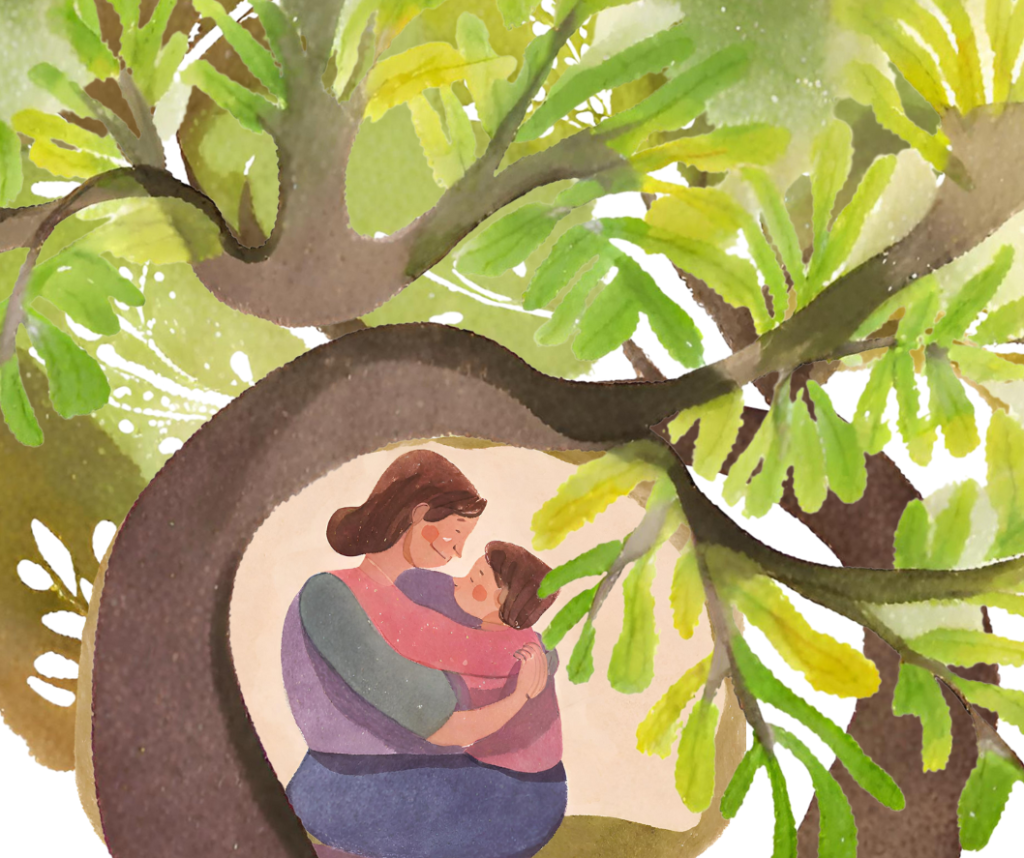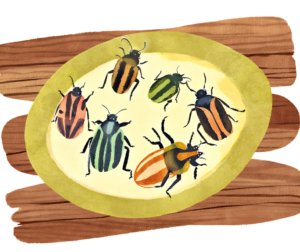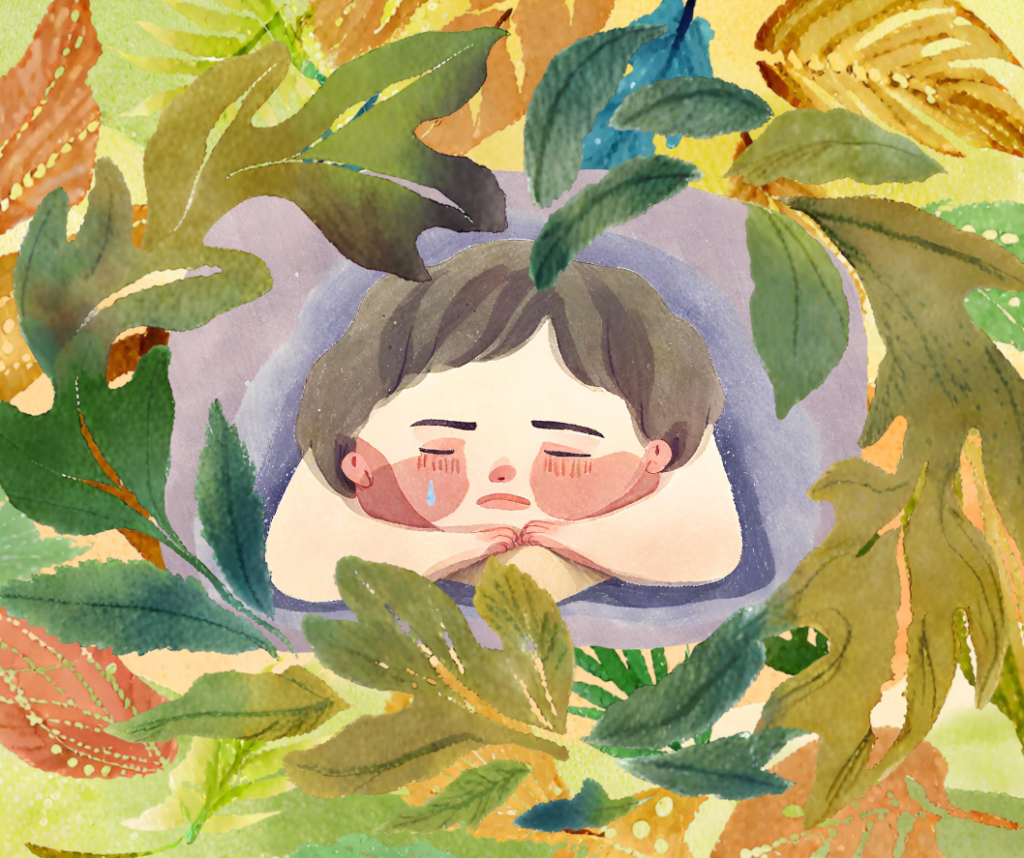How Trees Heal Brain Injury: Sibling Trauma in Traumatic Brain Injury

My younger child, El, was only 13 when his brother, whom he loved, suffered a severe traumatic brain injury. El is now 18 and his world has broadened vastly since then. His life is filled with a boyfriend, Minecraft videos, drawing, fan fic writing, and so much more. When he was younger, it was evident to almost anyone who ever took the time to notice: the child had a connection with animals, especially the smaller ones.
He’d spend hours outside turning over logs and stones and observing insects. He even started collecting dead bugs. Once, a neighbor left a dinner plate with a handful of dead beetles on the back doorstep.  Luckily, I was not squeamish; I was happy to support him because I saw such a deep joy and connection in him. Anything that flitted, flew, crawled, spiders included, was fair game. He’d climb into the apple tree and read books. He could spend hours outdoors. His connection with the trees and animals was undeniable. Unsurprisingly, when he ran away, he ran into the arms of the wooded ravine that hugged the house in nearly every direction.
Luckily, I was not squeamish; I was happy to support him because I saw such a deep joy and connection in him. Anything that flitted, flew, crawled, spiders included, was fair game. He’d climb into the apple tree and read books. He could spend hours outdoors. His connection with the trees and animals was undeniable. Unsurprisingly, when he ran away, he ran into the arms of the wooded ravine that hugged the house in nearly every direction.
El’s older brother, Peter, had survived a severe traumatic brain injury. Peter spent seven months in hospitals. El spent weekends with me and, during the week while I was with Peter in the hospital, it was just El and Dad. Seven months. Then, Peter came home. You’d think it would be joyous —and it was. Kind of.
In the hospital, someone was cleaning the room, assisting with bathing him, fixing his meals, and doing the laundry. In the hospitals, I ate out most of the time, and Peter had someone caring for him during the night so I could walk away, albeit very late, and sleep and come back refreshed in the morning. When Peter came home, all of this support was gone. Plus, I had to figure out how to manage all the medications, water boluses, getting him on the toilet and in the shower, how to transport him back and forth to outpatient rehabilitation, renovate the bathroom because the door was too narrow for the wheelchair and the bathtub was impossible to get in and out of safely. The list was long.
And where did El belong amidst all this? Peter had fallen out a window more than thirty feet to the pavement, and the subsequent brain injury kidnapped El of his parents and left him alone. And, even though El adored his brother, he felt guilty at times because he felt like Peter had taken so much from him.
 One June day, about a month after Peter had returned home from the hospital, El ran away. It wasn’t like any other day because our days were all tangled with trying to manage insurance claims, cleanups (Peter had no bladder or bowel control), and still do our best to parent a young teenager. El and his father had argued. Patience is difficult to conjure when you are being pulled in so many directions. El’s dad had worked all day and then worked helping me out when he got home. Mom and Dad were constantly busy and tired. There was no time for El and not much patience. Looking for comfort, he crept down the steep slope of the ravine, weaving between the trees whose arms stretched up high above his head. The ravine would hold him.
One June day, about a month after Peter had returned home from the hospital, El ran away. It wasn’t like any other day because our days were all tangled with trying to manage insurance claims, cleanups (Peter had no bladder or bowel control), and still do our best to parent a young teenager. El and his father had argued. Patience is difficult to conjure when you are being pulled in so many directions. El’s dad had worked all day and then worked helping me out when he got home. Mom and Dad were constantly busy and tired. There was no time for El and not much patience. Looking for comfort, he crept down the steep slope of the ravine, weaving between the trees whose arms stretched up high above his head. The ravine would hold him.
My sixth sense began to kick in, and I suspected that the last thing El needed was alone time. Dad didn’t have this “sense” or ability, at least not when it came to El. I stood at the edge of the ravine and hollered for El. No answer. Then, I went to find him.
Discovering him crouched amongst the thicket, eyes swollen from crying, I wrapped my arms tightly around El. Despite being pushed away, I wasn’t letting go. I could feel El’s insides all torn up; his emotions at such an intensity he quivered slightly. Anxiety was pushing out from him, throbbing like a finger that had been slammed in a car door. I’m not a big woman, but somehow, a fierce strength came over me and I knew I shouldn’t let go. The mosquitos bit and bit at us. El struggled and struggled. I wouldn’t let go –until I felt sure that my hurt child would hold my hand and return home. My puny arms were like thick tree trunks.
Perhaps the reader would like this story to end: "My hug healed El and all was better.” Or “And, El never ran away again.” But, the reality of a traumatic brain injury is that the victims are many —not just the brain-injured. El’s brain was injured, too. His heart. His emotional well-being. And mom and dad, too. And healing isn’t a magic thing that happens with a finger snap. Healing is a process. A journey. So, when people correlate a brain injury to a marathon, not a race, it is not just about the patient rehabilitating for the long haul. It’s about a whole family, including close friends, walking through healing one moment, one day, one year at a time.
The happy ending to this story is that the love that binds our family together won’t be broken by the fall that our son sustained. We will heal. We will rehabilitate. We will love. We will keep making life as beautiful as we possibly can.
What more can we do?
Support Siblings
Resources
Order a Welcome Art Kit for a sibling of a survivor
Join the private Sibling Facebook Group and talk to peers in a caring environment.